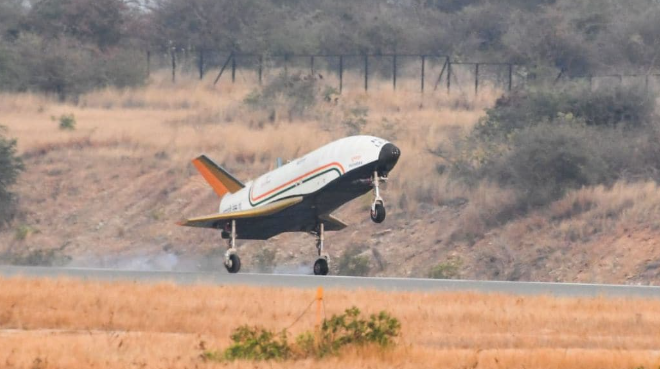Pushpak: ISRO’s Reusable Launch Vehicle
The Indian Space Research Organisation (ISRO) successfully conducted its third mission involving the Reusable Launch Vehicle (RLV) named “Pushpak” on March 22, 2024. The launch took place at approximately 7 a.m. from the Chalakere Runway in Karnataka’s Aeronautical Test Range (ATR).
Mission Objectives
The primary objective of the Pushpak mission is to develop essential technologies for a fully reusable launch vehicle, aimed at enabling low-cost access to space. This mission is part of ISRO’s ongoing efforts to reduce the cost of space missions and minimize space debris.
Launch Details
The Pushpak RLV was carried to an altitude of approximately 4.5 km by an Indian Air Force Chinook helicopter and released after achieving predetermined pillbox parameters. The launch vehicle autonomously approached the runway, making cross-range corrections, and landed precisely using its brake parachute, landing gear brakes, and nose wheel steering system.
Significance of the Mission
ISRO Chairperson S Somanath emphasized the significance of the Pushpak launch vehicle, describing it as India’s bold attempt to make space access more affordable. The reusable upper stage, which houses expensive electronics, could potentially enable the refueling of in-orbit satellites or the retrieval of satellites for refurbishment.
RLV-TD: A Technologically Challenging Project
The Reusable Launch Vehicle – Technology Demonstrator (RLV-TD) is one of ISRO’s most technologically challenging projects. Its purpose is to develop technologies crucial for a fully reusable launch vehicle. The RLV-TD’s configuration combines the complexities of both a launch vehicle and an aircraft, serving as a flying test bed to evaluate various technologies, including hypersonic flight, autonomous landing, and powered cruise flight.
Design and Configuration
The Pushpak RLV is designed as an all-rocket, fully reusable single-stage-to-orbit (SSTO) vehicle. It incorporates several major elements from advanced technology demonstrators such as the X-33, the X-34 testbed, and the upgraded DC-XA flight demonstrator. The vehicle features a fuselage, a nose cap, double delta wings, twin vertical tails, and active control surfaces called Elevons and Rudder.
Previous Missions and Future Plans
ISRO had successfully conducted previous RLV missions in 2016 and April of the previous year. The organization envisions scaling up the RLV-TD to become the first stage of India’s reusable two-stage orbital launch vehicle.
Cost and Naming
The Pushpak project, named after the mythological spaceship in the Ramayana, is estimated to have cost more than Rs 100 crore (approximately $13.5 million).
Important Facts for Exams
- The Pushpak mission was named after the mythological spaceship from the ancient Indian epic, Ramayana.
- The Indian Air Force played a crucial role in the mission by providing the Chinook helicopter to lift the Pushpak RLV to the desired altitude.
- The Pushpak RLV incorporates advanced elements from several technology demonstrators, including the X-33, X-34, and the upgraded DC-XA.
Month: Current Affairs - March, 2024
Category: Science & Technology Current Affairs








